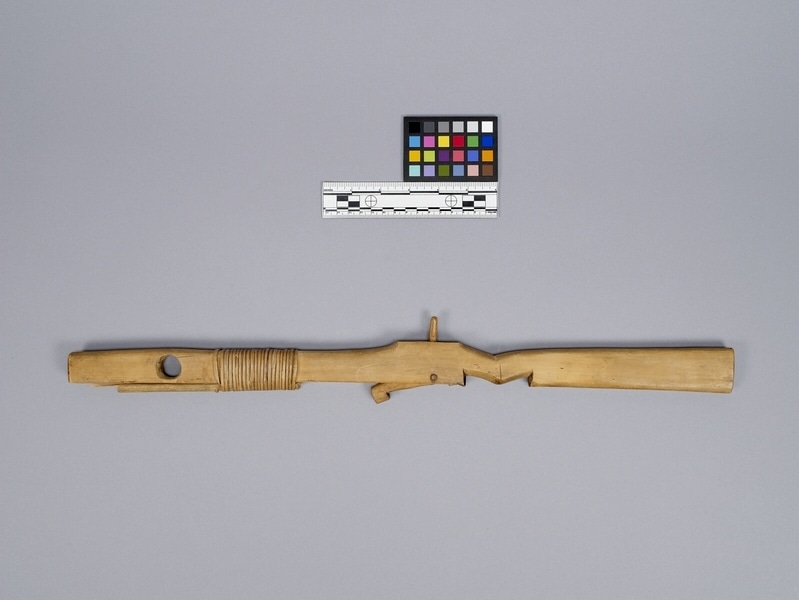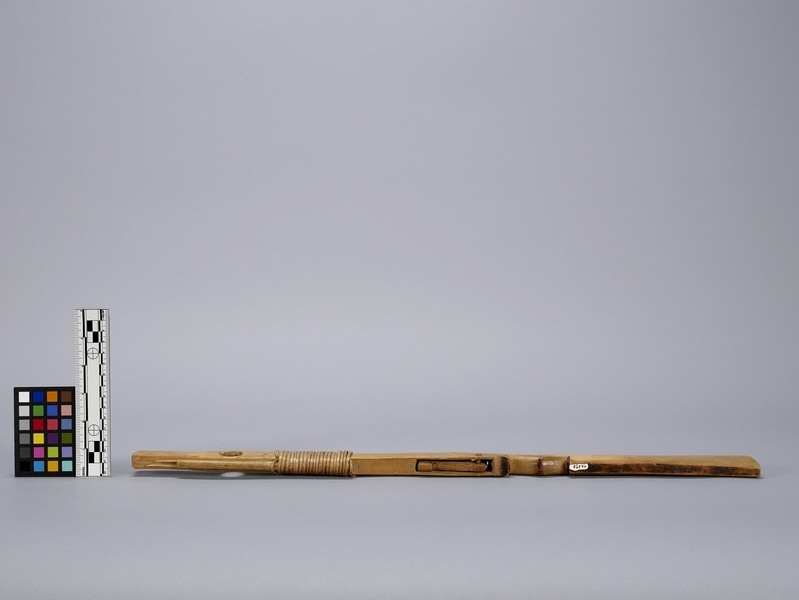Crossbow Item Number: K4.238 from the MOA: University of British Columbia


Description
Carved wooden main frame of a crossbow. Consists of: a hole at front of tiller, for inserting a prod, long tube strapped to shaft with cane, trigger-like mechanism inserted at centre and secured with a wooden peg, and a W-shaped notch behind the mechanism.
History Of Use
Records of the use of crossbows in Central and Western Africa dates back as far as the 1860s, when European explorers first witnessed their use as a hunting tool. The origins of Central African crossbows, like this, are debatable. The first Europeans to witness their use assumed they had been introduced to communities on the equatorial west coast of Africa by European traders. However, by the early 1900s evidence began to emerge that the crossbow may have developed in isolated areas before the arrival of European influence. Several groups in central Africa use crossbows for subsistence hunting, including the Sanga, Gbaya, and Baka communities. The use of the crossbow as a hunting tool survives among communities in the Congo Basin region today. This crossbow would most likely have fired small bolts, made of metal, wood, or bone.
Item History
- Made in Congo
- Owned by Alfred Bragg before 1947
- Received from Alfred Bragg (Donor) during 1947
What
Who
- Culture
- West African
- Previous Owner
- Alfred Bragg
- Received from
- Alfred Bragg (Donor)
Where
- Holding Institution
- MOA: University of British Columbia
- Made in
- Congo
When
- Ownership Date
- before 1947
- Acquisition Date
- during 1947
Other
- Condition
- fair
- Accession Number
- 1828/0016